We may earn money or products from the companies mentioned in this post. This means if you click on the link and purchase the item, I will receive a small commission at no extra cost to you ... you're just helping re-supply our family's travel fund.
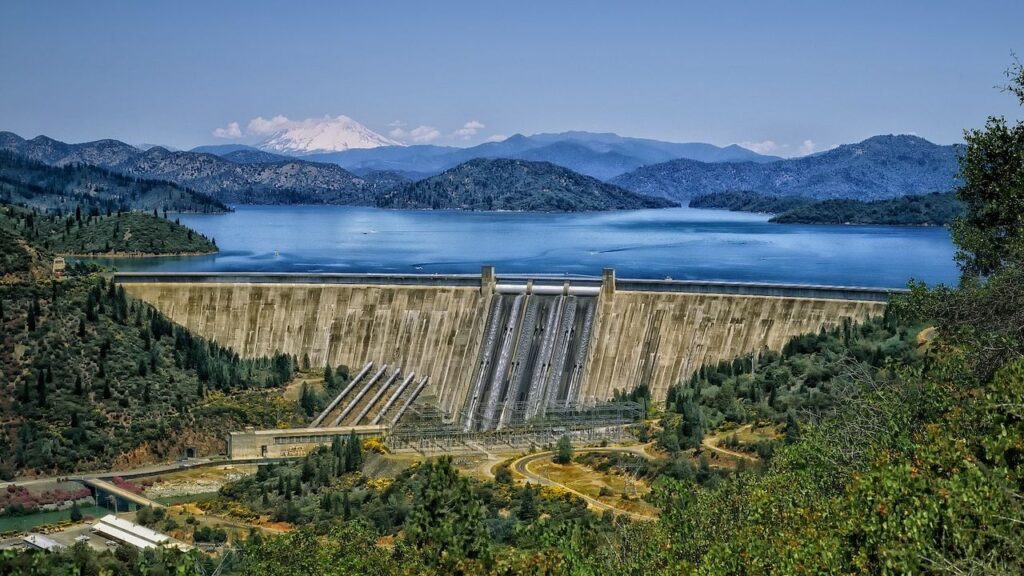
There is a unique and powerful beauty where engineering and nature meet on a monumental scale. America’s great dams are more than just concrete and steel; they are testaments to human ambition, ingenuity, and the desire to tame immense natural forces. Set in some of the country’s most dramatic landscapes, these sites have created vast, serene lakes and transformed arid lands. To stand atop one of these structures is to feel the quiet hum of immense power and witness a stunning intersection of human achievement and natural grandeur.
1. Hoover Dam, Nevada/Arizona
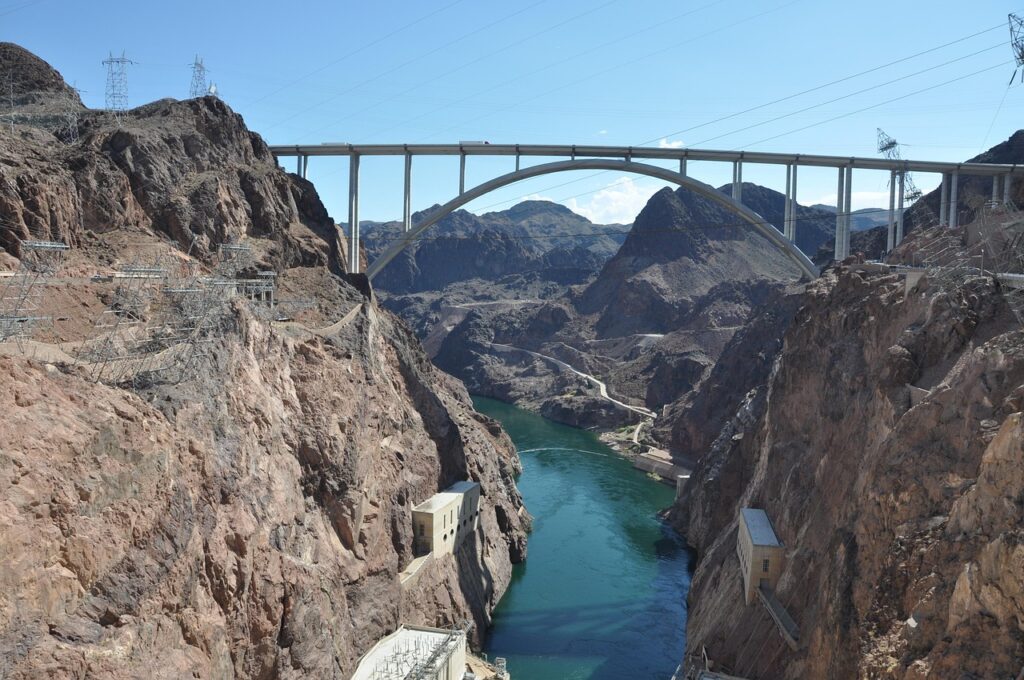
A true American icon, Hoover Dam is a masterpiece of Art Deco design and Depression-era determination. Rising 726 feet in the Black Canyon, it holds back the Colorado River to form Lake Mead. Its immense concrete wedge was built by thousands in harsh conditions, feeding power and water to a growing Southwest. Tours reveal its immense machinery and enduring role in the growth of Las Vegas and the desert communities it helped sustain.
2. Grand Coulee Dam, Washington
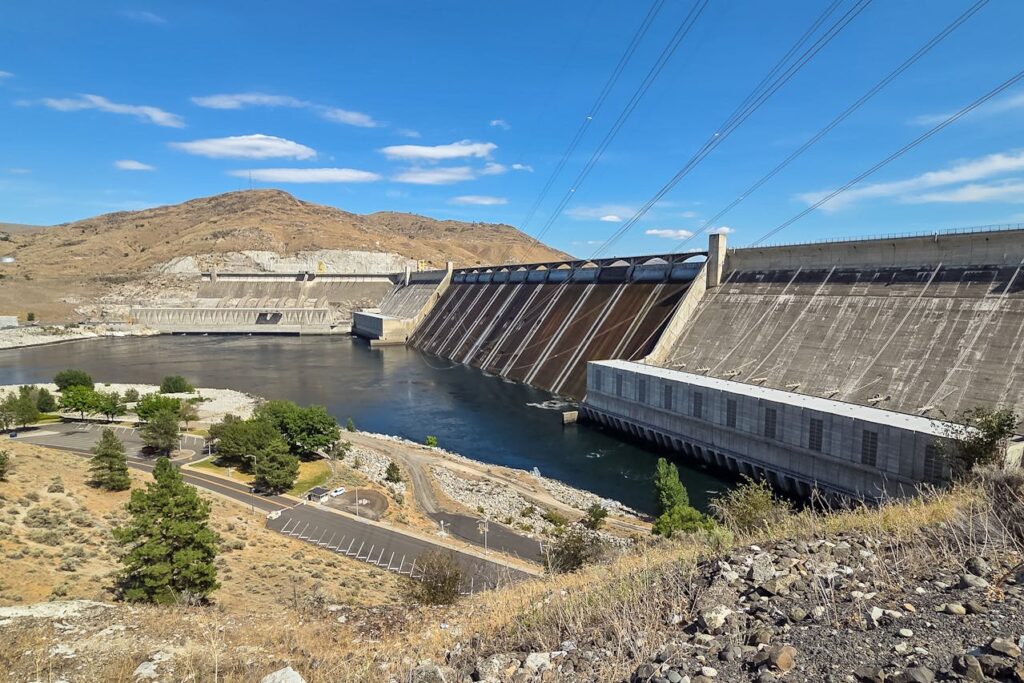
The Grand Coulee Dam, spanning the Columbia River, is the largest concrete structure in the United States, holding about 12 million cubic yards of material. Built to irrigate the Columbia Basin and fuel WWII production, it remains key to the Northwest. Each summer, its mile-wide spillway becomes the canvas for a popular laser light show, a vivid reminder of how this monumental feat of engineering continues to inspire as much as it powers.
3. Glen Canyon Dam, Arizona
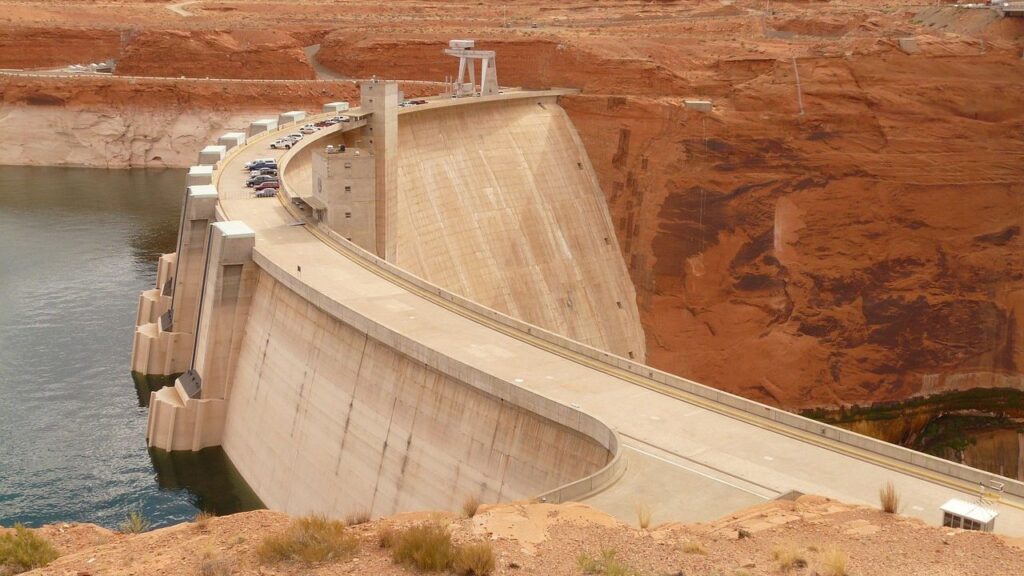
Just upstream from the Grand Canyon, the Glen Canyon Dam creates the stunningly beautiful Lake Powell. The dam’s elegant concrete arch rises 710 feet, set against the iconic red rock landscape of the desert Southwest. Its creation was controversial, flooding a magnificent canyon to form the reservoir. A tour takes you from the crest down to the power plant at its base, offering a dramatic perspective. Above, the deep blue waters wind through intricate sandstone canyons, creating a unique and beloved water recreation area.
4. Oroville Dam, California
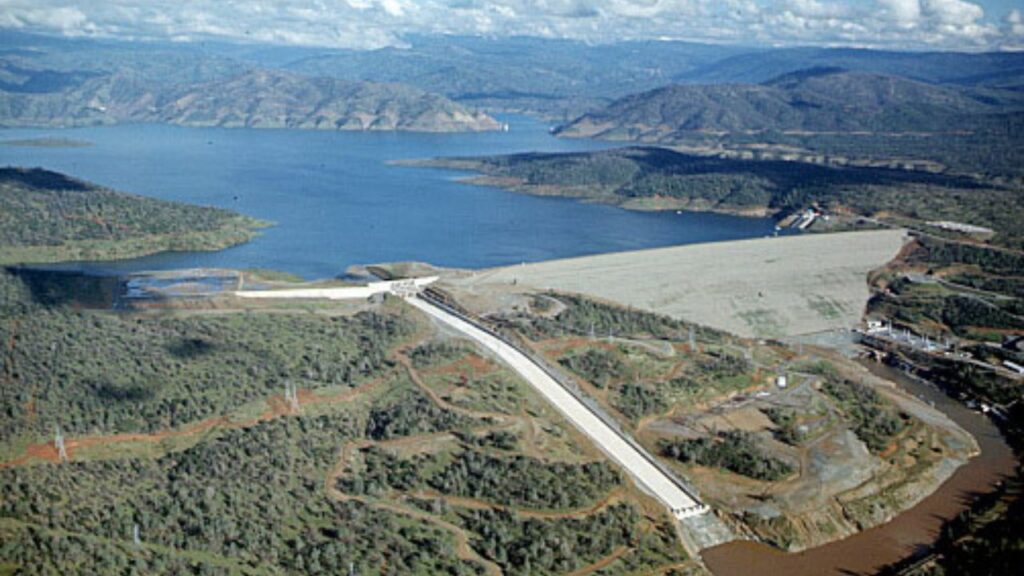
As the tallest dam in the United States, Oroville stands at an impressive 770 feet, anchoring the head of the Feather River Canyon. Unlike its concrete counterparts, Oroville is an earth-fill dam, a massive pyramid of rock and soil that blends more organically into the Sierra Nevada foothills. The dam and its sprawling lake are vital to California’s complex water system. The adjacent Feather River Fish Hatchery also offers a fascinating look at efforts to sustain the river’s salmon and steelhead populations.
5. Roosevelt Dam, Arizona
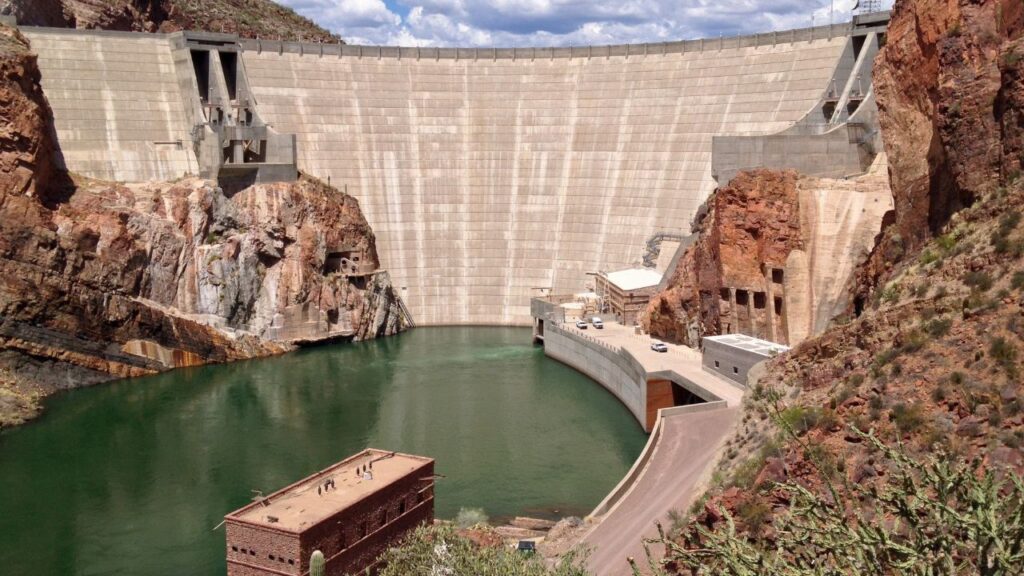
Completed in 1911, the Theodore Roosevelt Dam was once the tallest masonry dam in the world, built with massive stones by Italian stonemasons. Between 1989 and 1996 it was raised and resurfaced with concrete, now standing 357 feet high. Nestled in a rugged canyon on the Salt River, it remains a landmark of early reclamation projects. Reaching the dam along the scenic Apache Trail feels like a bridge back to the beginnings of modern Arizona.
6. Dworshak Dam, Idaho
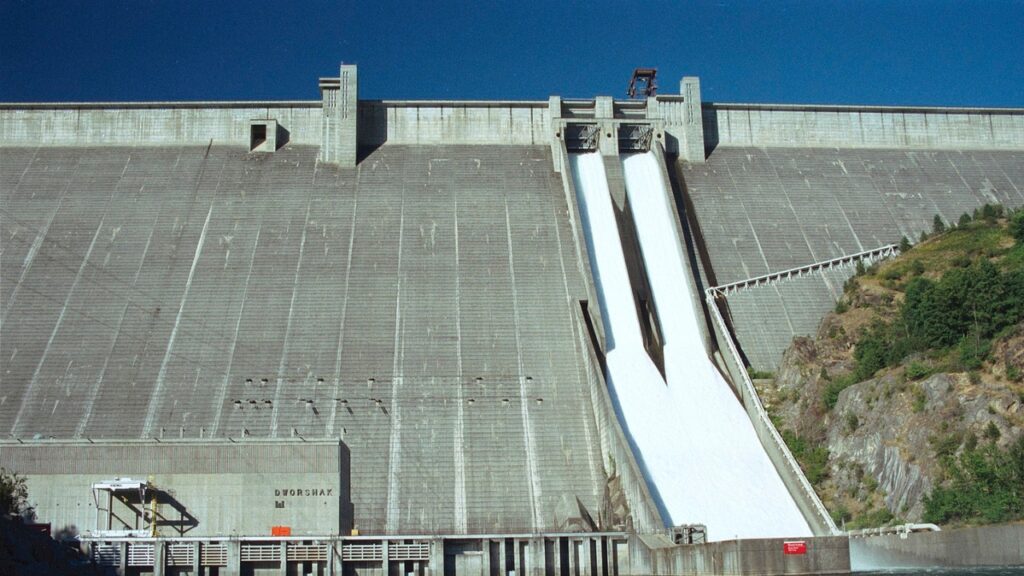
Deep in the forests of northern Idaho, the Dworshak Dam is the tallest straight-axis concrete dam in the Western Hemisphere. Its sheer, unadorned face rises dramatically from the North Fork of the Clearwater River, a starkly beautiful contrast with the dense evergreen wilderness. The project was controversial, as it blocked one of the world’s premier steelhead trout runs. Its reservoir is a narrow, 53-mile-long ribbon of calm water perfect for fishing and boating in a truly remote and wild setting.
7. Fontana Dam, North Carolina/Tennessee
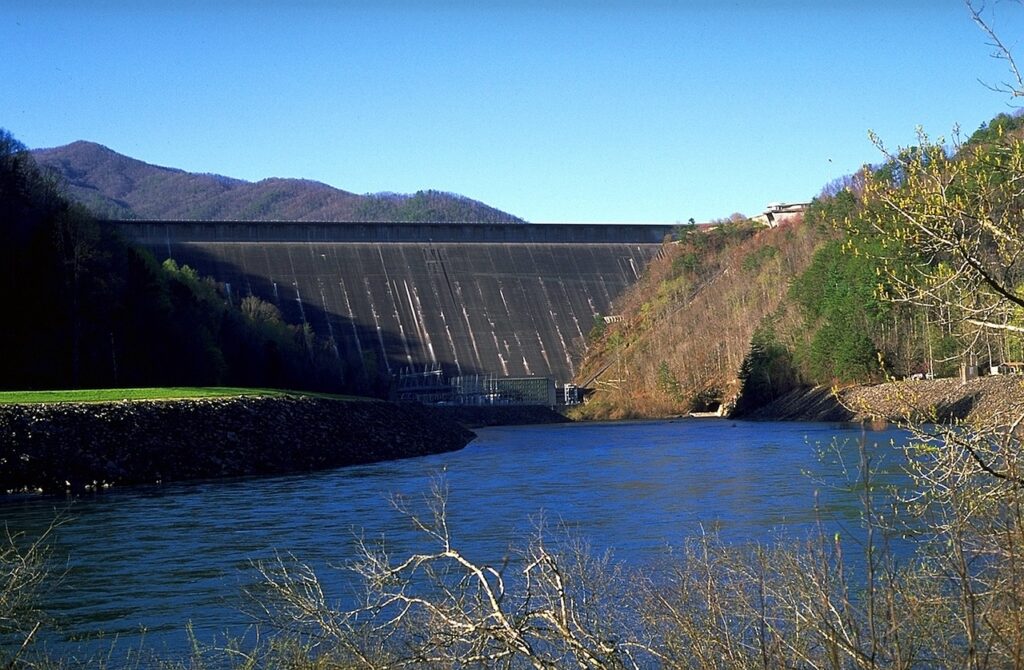
The tallest dam east of the Rocky Mountains, Fontana is nestled deep within the Great Smoky Mountains along the Appalachian Trail. Its serene setting makes it one of the most beautiful dam sites in the country, with the trail actually crossing over the top of the 480-foot structure. Built with astonishing speed during WWII to power aluminum production, its visitor center offers stunning views of the dam and Fontana Lake, whose clear, deep waters are surrounded by the lush, protected forests of the Smokies.
8. Buffalo Bill Dam, Wyoming
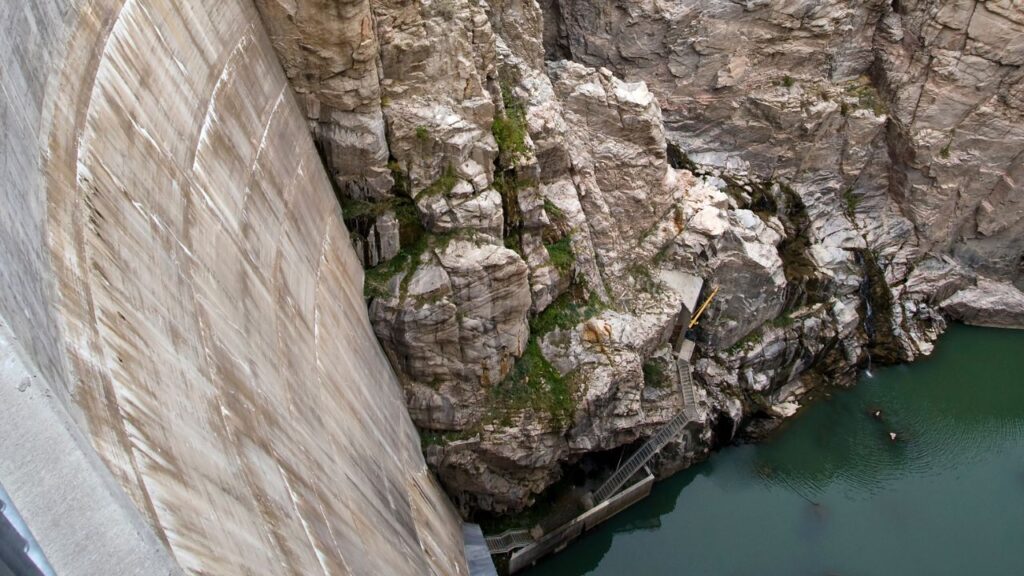
This dam was at the forefront of engineering at the turn of the 20th century, a key project in the quest to irrigate the Bighorn Basin. Located in the dramatic Shoshone River Canyon just west of Cody, the dam was the tallest in the world when completed in 1910. A walk along the top provides dizzying views down into the narrow canyon, a powerful sense of the vision required by William “Buffalo Bill” Cody and others to build such a structure in such a rugged and remote landscape.
9. Norris Dam, Tennessee
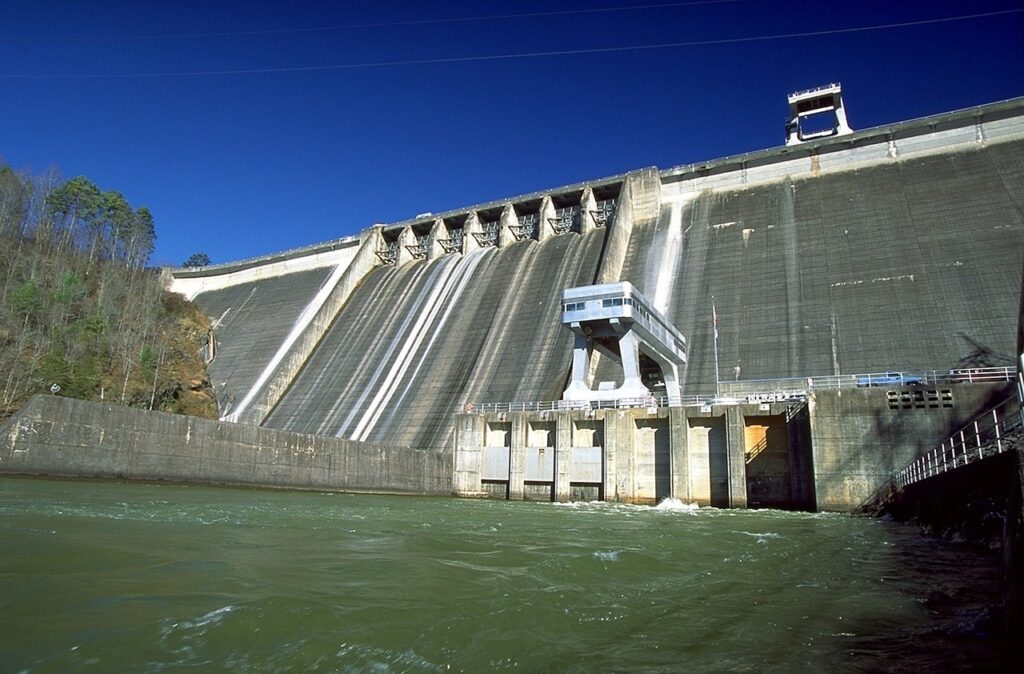
As the first dam built by the Tennessee Valley Authority, Norris holds a special place in American history. It was a cornerstone of the New Deal, a project designed to bring electricity, flood control, and economic hope to a struggling region. Its clean, modernist architecture and the beautiful state park that surrounds Norris Lake are a testament to the project’s transformative vision. Visiting the dam and the nearby planned town of Norris, built for its workers, feels like touching a piece of living history.
10. New Bullards Bar Dam, California
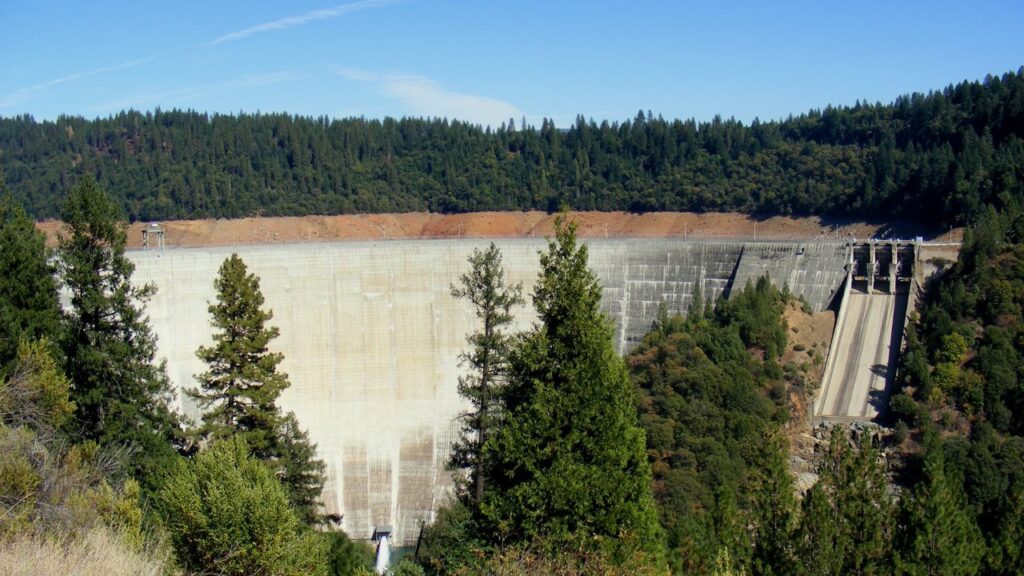
One of California’s tallest dams, New Bullards Bar rises 645 feet in the Sierra Nevada foothills. While its concrete arch is striking, the reservoir’s defining feature is the large morning-glory style spillway, which creates a dramatic whirlpool effect during peak flows. For visitors, especially after a wet winter, this rare sight offers a stunning mix of engineering spectacle and natural force, drawing curious photographers and engineers alike.
11. Redridge Steel Dam, Michigan
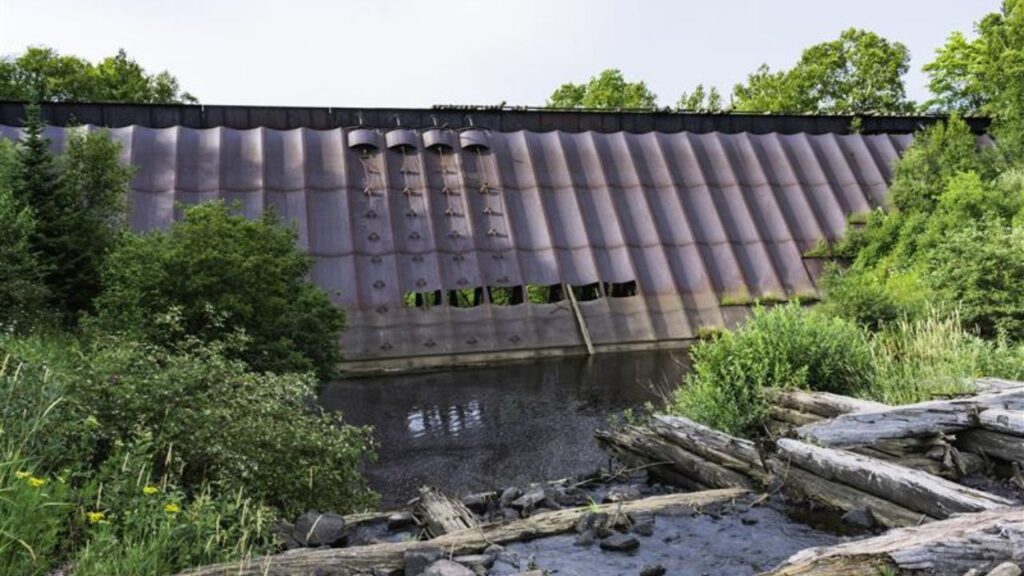
A fascinating relic of the industrial age, the Redridge Steel Dam is one of only three such dams ever built in the United States. Located on Michigan’s Keweenaw Peninsula, it was built to support copper mining operations. After it was decommissioned, parts were cut away, revealing an older timber crib dam just upstream. The water now cascades over the old timber structure, creating a beautiful waterfall set against the backdrop of the rusting steel frame—a picturesque monument to industrial history and natural reclamation.
12. Hetch Hetchy Dam, California
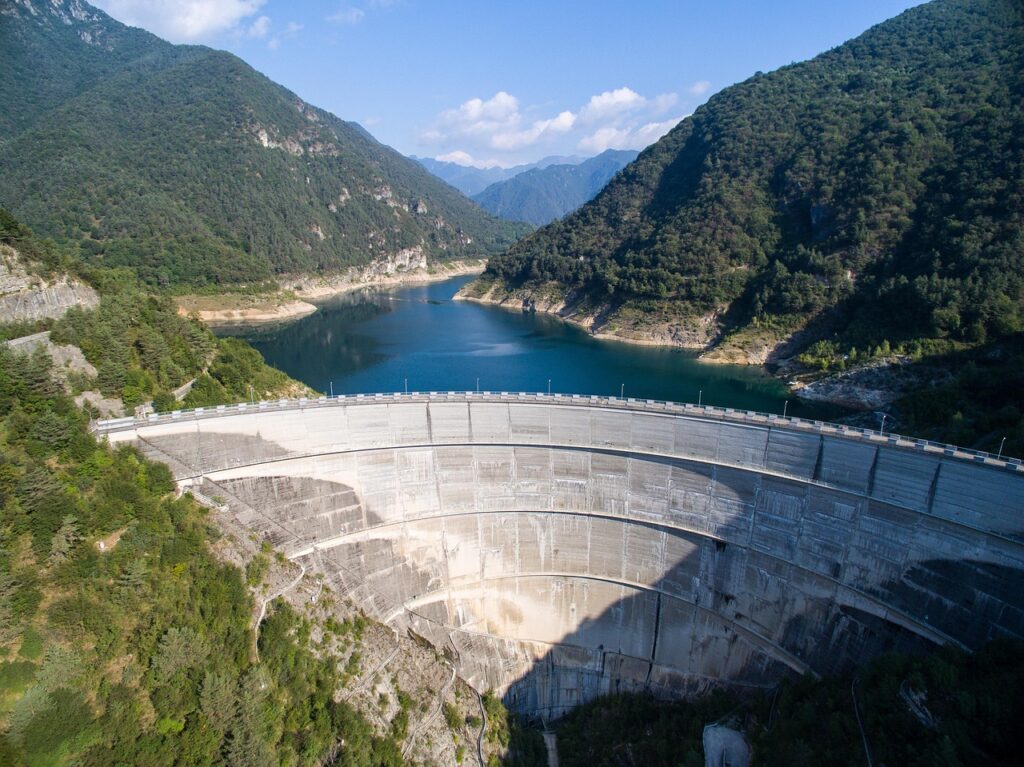
Located in a remote corner of Yosemite National Park, Hetch Hetchy is perhaps America’s most controversial dam. It flooded a valley that John Muir described as a sibling to Yosemite Valley, creating a reservoir that now supplies water to San Francisco. To visit, you walk through a tunnel and emerge to a stunning view of the dam, the reservoir, and the towering granite cliffs. It is a place of undeniable beauty that sparks a powerful and ongoing conversation about our choices and the value of wild places.